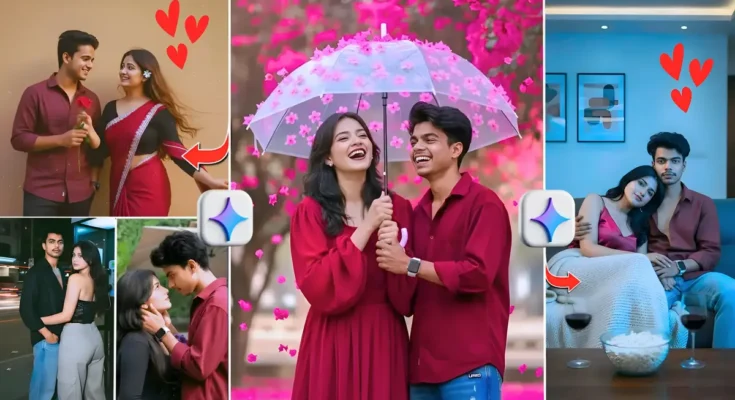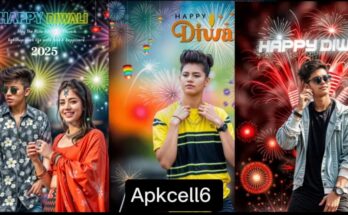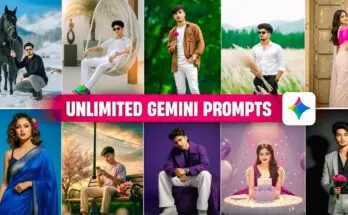Gemini AI has rapidly emerged as one of the most powerful tools for generating high-quality images and photorealistic portraits. As artificial intelligence reshapes the creative landscape, understanding how to effectively use prompts is key to producing visuals that feel emotionally rich and visually stunning.
Whether you’re a digital artist, photographer, content creator, or just experimenting with AI art, this guide will show you how to craft Gemini AI prompts that elevate your results to professional standards.
Why Prompts Matter in Gemini AI Image Generation
Gemini AI doesn’t just generate images—it interprets your language to create visuals. That means the quality and realism of your output are directly linked to how well you structure your prompts. Vague or confusing prompts often lead to generic or inaccurate results, while specific, well-thought-out inputs unlock the full power of the model.
The Importance of Detail in Gemini AI Prompts
The more detail you include in your prompts, the better Gemini AI performs.
✅ Be Specific: Describe the subject’s features clearly—such as age, ethnicity, hairstyle, or eye color.
✅ Define the Environment: Mention the background (e.g., beach at sunset, forest path, studio setup).
✅ Control Lighting: Specify whether you want soft lighting, golden hour tones, or dramatic shadows.
Example Prompt:
“Close-up portrait of a South Asian woman in her 30s, wearing a traditional saree, with expressive brown eyes and soft golden hour lighting in a garden background.”
This level of detail guides the AI to focus on realism, mood, and aesthetics.
Using Emotions and Expressions to Add Life to Portraits
What separates a photo from a portrait is emotion.
By adding emotional or expressive elements to your prompts, you can breathe life into the image:
- “A gentle smile with eyes full of nostalgia”
- “A fierce gaze with brows slightly furrowed”
- “Joyful laughter captured mid-moment”
These cues help Gemini AI adjust facial muscles, eye placement, and even lighting to match the mood.
Lighting and Environment: The Backbone of Realism
Lighting defines the tone and mood of your image. Always include lighting details in your prompts:
- Types of Lighting:
- Soft diffused daylight
- Studio flash
- Warm golden hour
- Chiaroscuro shadows
- Environments:
- Indoor: Vintage room, modern studio, classroom
- Outdoor: Foggy forest, cityscape, sunset beach
Example Prompt:
“Portrait of a teenage boy in a hoodie, standing under a streetlamp at night, with moody shadows and rain-soaked pavement.”
The combination of lighting and environment dramatically improves visual storytelling.
Crafting Portrait Style Through Prompts
Gemini AI allows you to specify artistic or photographic styles, which influence mood, texture, and color.
Some prompt examples by style:
- “Hyper-realistic 8K photography”
- “Vintage black-and-white film style”
- “Impressionist painting with pastel tones”
- “Cyberpunk aesthetic with neon backlight”
You can also focus on specific traits like:
- “Natural skin texture with visible freckles”
- “Ultra-sharp eye detail and glossy lips”
- “Soft-focus background with depth-of-field effect”
Refine Through Iteration: Don’t Expect Perfection on First Try
Prompting is an iterative process. You may not get the perfect image on the first attempt. Review your output and refine your prompt accordingly:
- If eyes appear flat, revise with: “Sharp eye reflections and defined iris detail.”
- If lighting is off: “Warm softbox lighting from the left side with soft shadows.”
Small tweaks can significantly improve the result. Keep refining until your image matches your vision.
Common Prompting Mistakes to Avoid
🚫 Being too vague – e.g., “portrait of a man.”
✅ Instead: “Portrait of an elderly man with a white beard, in winter clothing, looking thoughtfully into the distance.”
🚫 Overloading with conflicting ideas – e.g., “in daylight and moonlight.”
✅ Pick one consistent scene and mood.
🚫 Using technical jargon unnecessarily – Keep prompts natural and descriptive unless targeting specific effects.
Promoting Diversity Through Inclusive Prompting
One of the greatest strengths of Gemini AI is its ability to represent diverse identities. You can use prompts to create:
- Multicultural attire (e.g., kimono, dashiki, hijab)
- Varied body types and ages
- Unique skin tones and facial features
- Inclusive representations of beauty
Prompt example:
“Portrait of an elderly African man with tribal jewelry, smiling under a tree in the savanna, soft ambient light.”
This promotes broader representation in AI-generated media and storytelling.
Getting Started: Practical Tips for Beginners
- ✔️ Start simple, then add layers of detail.
- ✔️ Use natural language—describe images as if talking to a friend.
- ✔️ Build a prompt library of successful inputs.
- ✔️ Combine prompts with reference images when available.
- ✔️ Stay patient—iterate to improve outcomes.
Conclusion: Crafting Prompts is the Secret to Stunning AI Art
Gemini AI gives you the tools—but your prompts are the brush. By mastering prompt-writing techniques, you can guide Gemini AI to produce images that are not just beautiful but emotionally and artistically compelling.
Focus on specificity, emotion, lighting, style, and continual refinement. Over time, you’ll develop the intuition to bring your creative visions to life with precision and personality.
Disclaimer
This article is for informational purposes only. Results with Gemini AI may vary. Always review and verify generated content before using it in professional or public contexts.
📌 Related Reads & Updates
- Gold Is Surging in 2025 — Trade opportunities and CFD tips.
- Employment Bonus Hike 2025 — ₹5,000 bonus before Diwali for 25 lakh employees.
- Karwa Chauth AI Photo Ideas — 15 Gemini Prompts for viral couple edits.
- Sahara India Refund Update — How to claim your ₹80,000 Diwali bonus.



